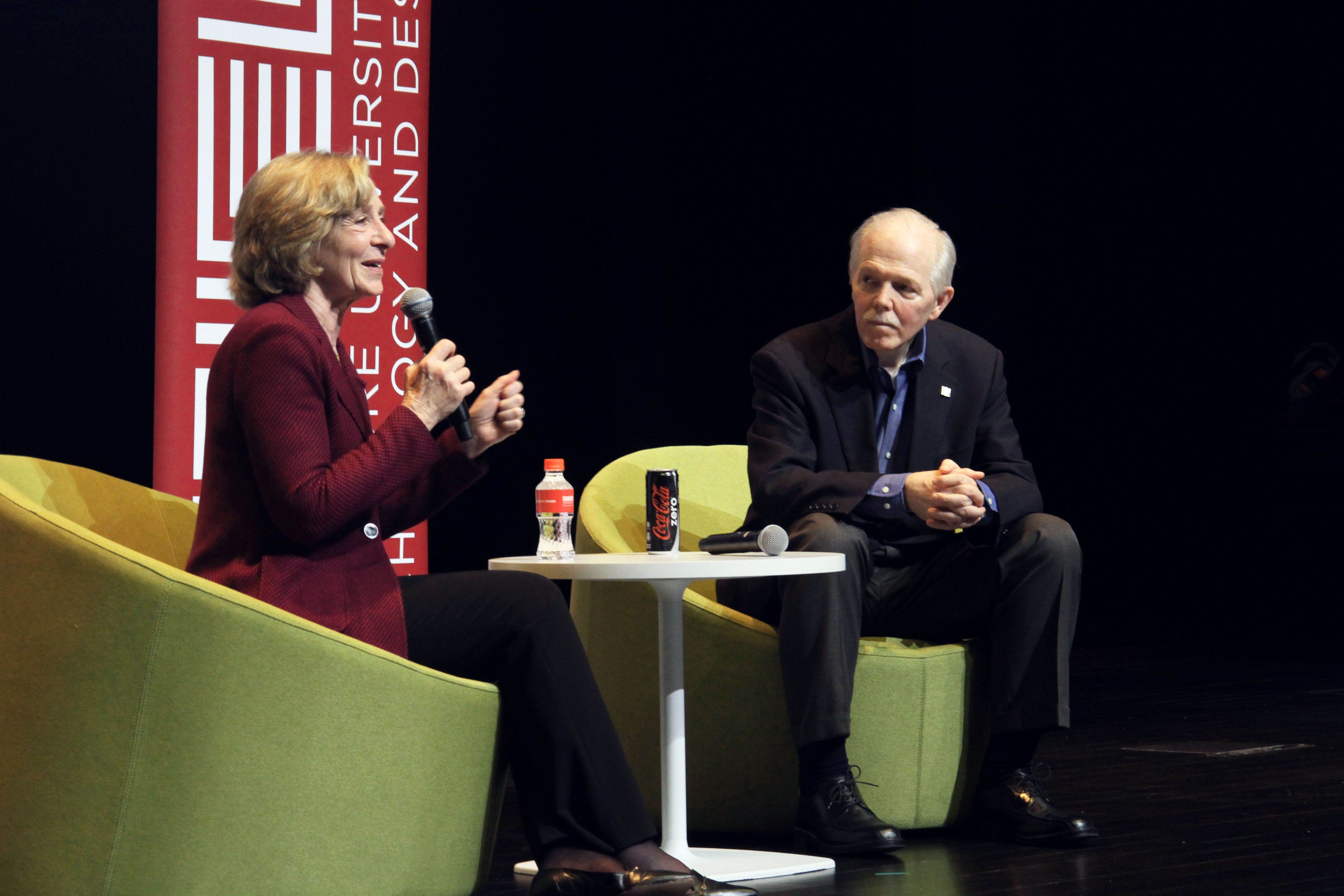
The Singapore University of Technology and Design (SUTD) welcomed MIT’s President Emerita Susan Hockfield to the Iconic Voices from MIT public lecture series on March 21, at the SUTD auditorium. The lecture series serves as a platform for interaction with experts in the areas of science, architecture, technology, and design from MIT. Other distinguished speakers have included Institute Professor Peter Diamond, a Nobel Laureate in economics, and Institute Professor Emeritus Jerome Friedman, a Nobel Laureate in physics.
The public lecture was attended by a diverse audience including representatives from Singapore government bodies, corporate partners, and nonprofit organizations; as well as educators and students, and other members of the SUTD community.
With the world’s population expected to exceed 9.5 billion by 2050, Hockfield noted that we face an unprecedented challenge to sustainably provide sufficient food, water, energy, and health care. “Convergence,” or the blending of insights and discoveries from the life sciences engineering, computation, and the physical sciences, holds the promise of accelerating discovery and the development of new technologies to meet the 21st century’s needs, she said.
As examples of convergence, Hockfield discussed the three recent revolutions in biology. The first revolution was the moving of traditional biology into molecular biology. She credited four outstanding scientists (Francis Crick, James Watson, Rosalind Franklin, and Maurice Wilkins) for their contributions in that transition and for their work in describing the structure of DNA. A key contribution of molecular biology, she explained, is that it gives us a “parts list” — a set of unifying principles for all living systems. Important products from this include disease genes and targeted disease therapies.
The second revolution was genomics. The cost of sequencing the human genome has dropped rapidly, from $3 billion in 2001 to about $1,000 today. It also takes significantly less time to sequence a human genome — as little as half a day. This marks an enormous advance in the power of molecular biology by allowing for massive data analysis for complex diseases.
The third revolution in modern biology was the convergence of biology with engineering and the physical sciences. This revolution has gained momentum. Hockfield cited three examples from MIT: new technologies for disease detection, by Sangeeta Bhatia, the John and Dorothy Wilson Professor of Health Sciences and Technology and Electrical Engineering and Computer Science and a member of MIT’s Koch Institute for Integrative Cancer Research; the production of sustainable energy by harnessing nature’s own processes, by Angela Belcher, the James Mason Crafts Professor in biological engineering and materials science and engineering at MIT and a member of the Koch Institute; and the development of anticancer nanoparticles, by Robert Langer, the David H. Koch Institute Professor.
A lively Q&A session followed, with Hockfield sharing in greater detail how convergence has had an impact on the issues in the world we live in today and the future ahead.
SUTD is Singapore’s fourth public university, and one of the first universities in the world to incorporate the art and science of design and technology into a multidisciplinary curriculum. Established in collaboration with MIT, SUTD seeks to nurture technically-grounded leaders and innovators in engineering product development, engineering systems and design, information systems technology and design, and architecture and sustainable design, to serve societal needs.
“To come back after six years and see the campus fully formed and populated just fills me with pride and joy,” commented Hockfield, who served as MIT’s president during the early years of the collaboration. “And as I think back to the days of planning, which were actually months and probably years, I had some ideas of how this (SUTD) might look like. But how it does look like has so far exceeded anything that I could possibly imagine,” she said.

![[Design Story] One UI Helps You Live Life Your Way – Samsung](https://loginby.com/itnews/wp-content/uploads/2025/11/1763476351_Design-Story-One-UI-Helps-You-Live-Life-Your-Way-238x178.jpg)





